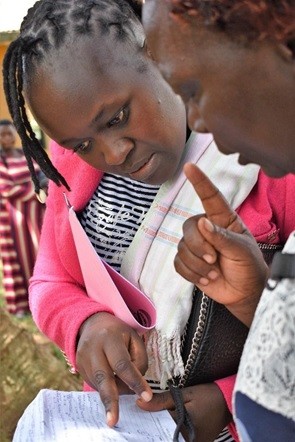Speeches Shim

Christine (not her real name) and her two children travel from Uganda to Kenya every two weeks to trade in fish and farm products. During this trip, she visits Port Victoria sub-County Hospital to refill her family’s antiretroviral (ARV) drugs. But the arrival of the coronavirus disease (COVID-19) upended her trips.
The restrictions put in place to mitigate the spread of COVID-19 meant that she could no longer cross the border from Uganda to Kenya to refill her ARV medications. Like many other people living with HIV, she was now stranded without the medication she needed to ensure the health of her family. Panicked, the 27-year-old called her health care provider in Kenya and explained her predicament.
“I knew I had to act fast,” says Brenda Makokha, a comprehensive care clinical officer at Port Victoria Sub-County Hospital. “The mother and her two children had a high viral load and required continued care.”
Brenda worked with her team to find ways to help her client access these vital medications without having to cross the border.
Using SMS messaging, Brenda contacted colleagues in a USAID-funded Ugandan health facility. Not long after, she received an SMS message back from the clinical lead saying -- “Please [tell] your client to report to Bugana Health Center II [right away].”
Thanks to USAID, the mother of two was able to get her much-needed refills. Continuity of care for mobile and cross-border patients, especially those receiving treatment for HIV and tuberculosis, is critical. However, in places where health systems lack the formal mechanisms to communicate across borders and create facility-to-facility linkages, continuity of care is a challenge.
USAID has supported HIV prevention and treatment for mobile populations in East Africa for the last 15 years. To meet the unique needs of cross-border populations, USAID, in collaboration with national and regional stakeholders, developed an evidence-based cross-border health unit (CBHU) model in six cross border sites to support national health systems. The CBHU centers bring together health facilities to address complex challenges like high medication default rates in mobile and cross-border populations.
USAID also supported the development of a directory that includes contact information of health facilities and health care workers on either side of the border to facilitate access to health services. Using the directories, the CBHUs established communication mechanisms such as WhatsApp groups that enable members to share information and exchange ideas on how to support mobile and cross-border populations.
“I don’t know where I would have directed my clients were it not for these communication platforms,” says Makokha. “Through the CBHU, health care workers... facilitate cross-border referrals, track clients and exchange information on the different treatment regimen.”
The CBHU is proving a useful and sustainable solution to address some of the challenges that have arisen in cross-border areas due to COVID-19. “Thanks team Uganda for supporting the clients from Kenya,” said Samia Sub-County’s AIDS and Sexually Transmitted Infections Coordinator, Jane Wandera. “We really need to support each other like never before. The virus knows no boundaries and working together through the CBHU will contribute to continuous support to our clients as well as mitigate the spread of COVID-19.”

Comment
Make a general inquiry or suggest an improvement.